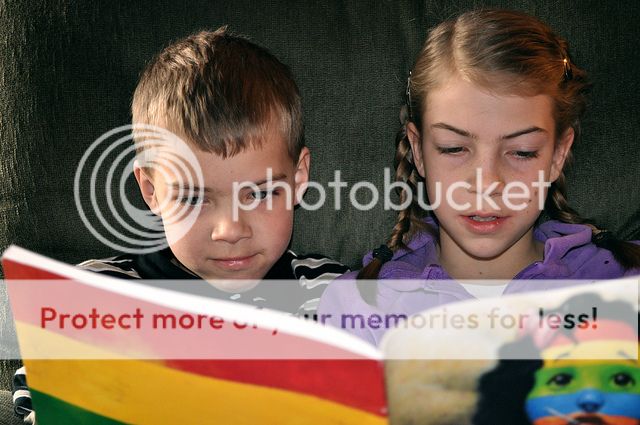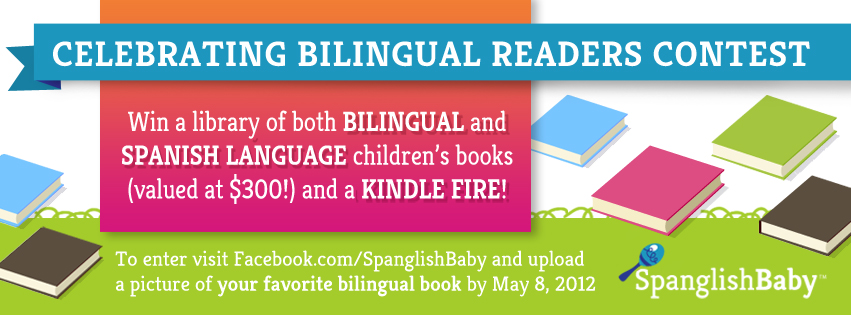Many Spanish-speaking parents hesitate to teach their children to read in their home language because they worry that this will make it more difficult for their children to learn to read in English. Nothing could be farther from the truth! In fact, the more children know about reading in their first language, the easier it will be for them to learn to read in English.
Thinking first about pre-readers, we know from years of research that there are certain foundational literacy skills that children need in order to be ready to learn to read. These skills include both print-related skills, such as knowing letter names and letter sounds, and sound-related skills, which come under the broad heading of phonological awareness. Early phonological awareness skills include, for example, being able to recognize words that rhyme or words that begin with the same sound. About twenty years ago, researchers began studying the relationship between these early foundational skills, developed in Spanish, and later reading achievement in English, and the results are clear. Strong print and phonological awareness skills in Spanish have consistently been found to be associated with successful later reading achievement, not only in Spanish, but also in English!
Parents can help prepare their children for learning to read in both languages by using Spanish to teach their children rhymes and songs, play word games, and share storybooks. Playing with words and rhymes develops phonological awareness, which prepares children for learning to “sound out” words when they begin to read. Interactive storybook read-alouds in Spanish expose children to the rich vocabulary of texts, vocabulary that they might not encounter in day-to-day spoken language. Read-alouds also help children develop early reading comprehension skills as they talk with parents about the events and concepts in the stories they are sharing. If parents call children’s attention to the print in the stories they are reading, they can also help children learn letter names, letter sounds, and print concepts, such as being able to point to the title of the book or knowing that text is read from top to bottom and from left to right. All of these skills prepare children for learning to read, both in Spanish and in English!
Once children actually begin reading, they can use what they know in one language to support their learning in the other. For example, a child who already knows how to read in Spanish already knows the concept of sounding out words to decode text. S/he has a distinct advantage over a child who is just learning that letters represent sounds, and sounds go together to make up words. In addition, a child who is a reader in Spanish already knows quite a few letter sounds in English because 12 of the letters (b, c, f, k, l, m, n, p, s, t, w, and y) make exactly the same sounds in the two languages! In addition, between 30% and 40% of all English words have Spanish cognates, or words that look similar and have the same meaning in the two languages. Parents can support their children’s English reading by helping them make connections like this between what they know in Spanish and what they are learning in English. They can also help by pointing out trouble spots, such as sounds that children will encounter in English that do not occur in Spanish (for example, sh).
Anyone who has ever taken a foreign language class, either in school or as an adult, has had the experience of applying established reading skills to a new language. Clearly, a child who begins studying French or German for the first time in eighth grade does not have to learn to read all over again. S/he simply has to learn how to apply what s/he already knows about reading to the unique rules of a new language. That is the same experience that children who can read in Spanish have when they begin learning to read in English. If they are beginning readers in both languages, they may not have as strong a reading foundation to call upon as the eighth grader in our example; however, having developed even elementary skills in Spanish reading will give them a boost as they learn to read in English. Not only has this fact been supported by research, it has also been borne out in classrooms across the U.S. For as Stephen Krashen stated so succinctly, “once you can read, you can read; reading ability transfers across languages.”
DON’T FORGET TO ENTER OUR CELEBRATING BILINGUAL READERS CONTEST FOR YOUR CHANCE TO WIN OVER $300 WORTH OF BILINGUAL/SPANISH BOOKS AND A KINDLE FIRE!





Great Article! Though I don´t know if I totally agree with – once you can read you can read. It is the general rule, but I have many experiences with young readers in Spanish who struggle much longer when they are learning to read in English. Maybe they are “reading” but its at a very low level – A, B, or C and yes they are probably not strong readers in Spanish either, but at a higher level. And of course reading involves a lot more than just decoding – comprehension is huge and that is definitely not a given especially with bilingual students!!
At my bilingual school in Colombia, the kids start learning to read in Spanish at about age 6 – 7 and then in English at about age 8 – 9. I am always pushing for them to be exposed to English reading earlier because they are expected to do English, Math, and Science curriculum at their age level, but with much less exposure to reading than their American counterparts. The students make huge gains in three years and usually by about 6 years – they are caught up academically.
Usually the students that are not doing well in English – reading comprehension, etc. are also not doing well in Spanish with the same things. When they are doing well in Spanish, then we try to give them special interventions designed specifically to work with the intricacies of reading in English. This usually has a lot to do with sounds, spelling patterns, and word work.
Dr Ford–Gracias for writing this explanation so eloquently!! Sometimes when I try to explain the transfer concepts to people, I get tongue-tied! Thanks for sharing and affirming what we do every day!